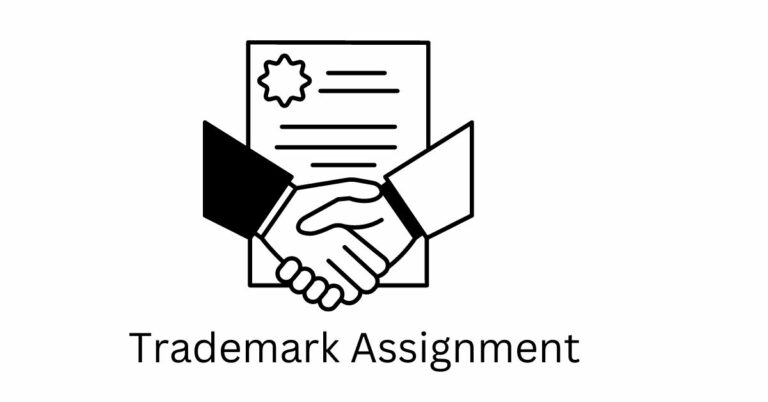Trademarks are transferred in the same manner as physical possessions. The method of transfer of trademark is known as Assignment of trademark. In its broadest definition, assignment refers to the transfer of ownership, rights, interests, and benefits from one individual to another.
There are certain differences in the registered brand’s ownership when a trademark is assigned. However, when it is licensed, only a few limited rights are granted to the third party while the benefits of the trademark continue to belong to the buyer. This assignment can be done with or without assigning the business goodwill. Such an assignment must be recorded in the Trademark Register in the case of a registered trademark.
The original owner of the trademark is known as “the assignor,” and the future owner is known as “the Assignee.”. Section 2(1)(b) of the Trade Marks Act, 1999 states that assignment means an assignment of a trademark in writing by the act of the concerned parties. Both unregistered and registered trademarks can be assigned with or without the goodwill of the business.
Table of Contents
ToggleWho can assign a trademark?
According to Section 37 of the Trade Marks Act of 1999, the owner of a trademark who is listed in the register of trademarks has the authority to assign their trademark and to make effective receipt for any consideration associated with such an assignment.
Different ways to assign or transfer a trademark in India
Complete Assignment
It refers to the transfer of all rights, including those to royalties, additional transfers, and other rights, from one person to another.
Partial Assignment or Specific Assignment
It denotes a transfer of ownership that is limited to or particular to certain goods or services.
Assignment with Goodwill
The trademark’s value and all rights related to it as it relates to the products or services are transferred. The assignment in this case is structured such that the rights and value are transferred with regard to more than just the class of goods for which the trademark was formerly lawfully used. Any class of goods may be covered by the use of the trademark by the person obtaining ownership. (under Section 39 of the Act).
Gross assignment or Assignment without Goodwill
Without transferring the right to use the trademark for the class of goods that the original owner of the trademark had been previously used it for, all rights and value of the trademark are passed to the assignee (buyer). For instance, if the trademark “LOVEKART” was being used for gift box delivery services, any assignment made without transfer of the trademark’s goodwill would prevent the assignee from using the mark for those services. The assignee must establish a different goodwill in the same with regard to any other class of products or services (under Section 39 of the Act).
Limitations of trademark assignment under the 1999 Act
Since it would cause confusion in the minds of the general public with average memory, the creation of exclusive rights in more than one person with respect to the same or comparable goods or services, including related and kindred class of goods and services, is forbidden.
It is also prohibited to assign the marks to different individuals for usage in various regions of the nation.
It is also prohibited to assign the same mark to several users in various regions of the nation at the same time.
What are the Benefits of Trademark Assignment?
The following are some of the advantages of trademark assignment.
Monetization of Brand
Profit from the value of your trademark and take pleasure in the results of the time and effort spent developing your brand.
Easy Brand Building
The assignee benefits as well because brand building is not something they have to do.
Maintenance Of IPR
In terms of keeping the trademarks registered, trademark assignment aids in the preservation of intellectual property.
Owner Gets the Value of The Trademark
Creating a brand, which takes a lot of money, effort, and time. As a result, the trademark assignment aids the trademark’s creator in determining the trademark’s financial worth.
Acts as a Valid Proof
If there is ever a disagreement over the assignment of a trademark, the trademark assignment can be used as legitimate proof. Through such agreements, the registered trademark owner’s legal rights are effectively secured.
Owner Enjoys Various Benefits
The many advantages of using an already established trademark are enjoyed by the trademark owner.
Expansion of Business
Assignment of a trademark aids in business expansion into related industries’ markets.
Procedure for Trademark Assignment Agreement
- The assignee, assignor, or both must submit an application for the assignment of a trademark as the initial stage. According to Rule 75 of the 2017 Trademark Rules, the application must be made using Form TM-P and include all relevant information regarding the transfer.
- Once the application is finished, submit it to the trademark registrar. Within three months of acquiring proprietorship, it must be completed.
- The approval from the Registrar of a trademark is required before the expiration of three months when there is a trademark assignment involving goodwill or a registered trademark (can be extended).
- The trademark assignment advertisement shall be specified by the Registrar. The candidate then has to make the appropriate advertisement. Additionally, a copy of the advertisement and a copy of the Registrar’s instruction must be submitted.
- The trademark will be formally transferred from the original owner to the new owner after the Registrar is satisfied with all the supporting evidence.
- The new owner’s name must be entered in the register as a new proprietor under the Assignee’s name. The assignee may then use the trademark in accordance with the terms of the agreement after this.
Documents that must be included with agreements to assign trademarks
Below is the list of documents required for the process of trademark rights transfer
1. Power of Authority (from Assignor & Assignee)
This method involves two parties. The person who transfers rights to another person is known as the assignor. In the course of a trademark assignment, the assignee is the one who acquires the trademark rights.
Each party must sign a power of authority if the trademark assignment is done with the assistance of a legal practitioner.
2. Trademark Assignment Agreement
The trademark assignment agreement is a legal instrument that acknowledges the handing over of obligations and rights from one party to another.
The only document that demonstrates
- The transfer of trademark ownership.
- The interest of the parties involved.
- The rights and responsibilities attached to the assignment of a trademark, the assignor’s payment for the transfer, etc.
Any number of entitlements, rights, and duties of different parties are included in a trademark assignment agreement. Additionally, it foresees the risks and expectations of the parties concerned. Before carrying out a trademark assignment in India, it is wise to take a professional’s advice into account.
4. No Objection Certificate (executed by the Assignor)
The assignment of trademark ownership by the assignor is expressed in a no-objection certificate. The trademark assignor additionally acknowledges in this document that they do not oppose to such a right transfer.
5. Goodwill Certificate (given by the Assignor)
When a trademark and its owner’s goodwill are being transferred completely, this paperwork is necessary.
6. Acceptance of trademark rights (provided by the Assignee)
During the trademark assignment process, the trademark registrar should receive a copy of this vital document as well. The assignor may transfer the trademark rights, and the assignee must agree to do the same.
As a result, this document is the assignee’s formal acknowledgment of the right transfer. This agreement is occasionally combined with the trademark assignment agreement. It emphasizes the assignee’s acknowledgement of trademark rights.






